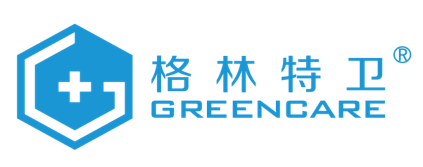Protect Yourself: The Importance of personal protective clothing
Having the proper personal protective clothing is essential when working in hazardous environments. Whether it's in the construction industry, healthcare, or any other occupation that involves exposure to harmful chemicals, equipment, and substances, it is vital to have the right protective gear to prevent accidents and injuries.
What is Personal Protective Clothing?
Personal protective clothing refers to garments or equipment worn to protect the body from harm. These items are designed to safeguard against physical, chemical, and biological hazards and can include helmets, gloves, respirators, eyewear, and protective clothing such as coveralls or gowns.
Types of Personal Protective Clothing
There are several types of personal protective clothing, each designed for different levels of protection and use. Some of the most common types include:
- Chemical Resistant Clothing: This type of protective gear is designed to protect against hazardous chemical exposure.
- Heat Resistant Clothing: Heat resistant clothing is used in industries where high temperatures are present, such as foundries or steel mills.
- Cut Resistant Clothing: This type of personal protective clothing is designed to protect against cuts and lacerations in hazardous working environments.
- Radiation Protective Clothing: Designed to protect against exposure to radioactive materials, radiation protective clothing is commonly used in nuclear industries or healthcare settings.
Benefits of Personal Protective Clothing
Personal protective clothing offers numerous benefits, including:
- Preventing injuries and accidents.
- Reducing exposure to hazardous substances.
- Complying with regulations and standards.
- Providing peace of mind to workers.
Selecting Personal Protective Clothing
When selecting personal protective clothing, it is essential to consider the specific hazards of the job, the level of protection required, and the comfort of the worker. Some key factors to consider include:
- Material: Different materials offer different levels of protection, durability, and comfort.
- Fit: The clothing should fit well and allow for freedom of movement while still providing adequate protection.
- Visibility: In low-light environments, it is important to select clothing that is highly visible to prevent accidents.
- Maintenance: Personal protective clothing should be regularly cleaned and inspected to ensure it remains in good condition and continues to offer adequate protection.
Cleaning and Maintenance of Personal Protective Clothing
Proper cleaning and maintenance of personal protective clothing is crucial to ensure that it continues to provide the necessary protection. Some tips include:
- Follow manufacturer's instructions for care and cleaning.
- Store clothing in a clean, dry area away from direct sunlight and chemicals.
- Regularly inspect clothing for damage and replace as necessary.
- Replace clothing after exposure to hazardous materials or chemicals.
Regulations and Standards for Personal Protective Clothing
Personal protective clothing is subject to various regulations and standards based on the specific industry and location. These regulations are in place to ensure that the gear offers adequate protection against hazards and that workers are safe in their work environment.
The Future of Personal Protective Clothing
Advances in technology are making it possible to create personal protective clothing that is more protective, comfortable, and versatile. For example, smart fabrics that can monitor a worker's vital signs or change color to indicate when the gear needs to be replaced are being developed and may become commonplace in the future.
Conclusion
Personal protective clothing plays an essential role in keeping workers safe and protected in hazardous environments. It is essential to select the proper gear and maintain it properly to ensure that it continues to provide adequate protection. With advances in technology, the future of personal protective clothing is bright, and gear will continue to evolve to meet the needs of workers in various industries.

